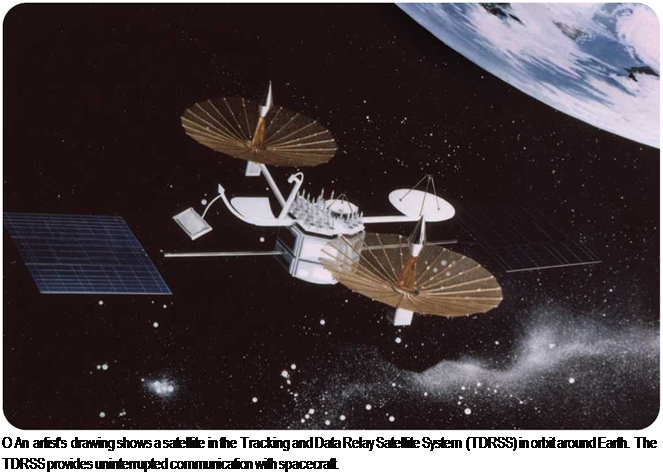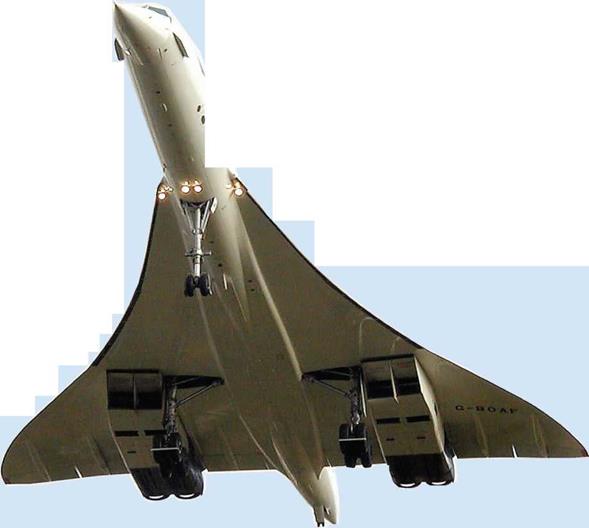Deep Space Network
NASA communicates with its deep-space probes in a different way, by using the Deep Space Network. When radio signals from distant space probes arrive at Earth, they are very weak. Huge radio dishes are needed to
 |
collect the signals. The dishes are too big to be launched into space, but a big dish on Earth cannot stay in constant contact with a space probe. For half of every day, the dish would be on the wrong side of Earth.
NASA uses three huge dishes to stay in touch with space probes all over the Solar System. The dishes, each 230 feet (70 meters) across, are spaced equally around the world. One dish is located at Goldstone, California. The second is near Madrid, Spain, and the third is near Canberra, Australia. At busy times, a 210-feet (64-meter) dish at Parkes, Australia, is also used.
The dishes must be big because the radio signals they receive are very weak.
If the signals from the farthest space probes were saved up for one billion years, there still would not be enough energy to power a light bulb. These dishes, however, can lock onto the tiny radio signal from a space probe 10 billion miles (16 billion kilometers) from Earth!
SEE ALSO:
• Air Traffic Control • Avionics
• Satellite • Sound Wave
_____________________________________________ J
 Concorde
Concorde
Type: Commercial transport, supersonic airliner.
Manufacturer: Aerospatiale (France) and British Aerospace.
First flight: March 2, 1969.
Primary users: Air France,
British Airways.
|
C |
oncorde was a supersonic
transport (SST) that flew at Mach
2, which is twice the speed of sound. Technically, it was a remarkable airplane, and its
passengers were thrilled by the experience of
speeding through the stratosphere faster than a bullet.
Concorde began passenger services in 1976 and was retired in 2003.
In the 1950s, engineers began drawing up plans for a new generation of high-speed
О As Concorde prepares to land in 2003, the world’s only supersonic passenger service was coming to an end. When Concorde landed, the aircraft pointed upward, but its droop – snoop nose tipped downward to help the pilot’s view.
airliners. Development costs were so high that the French aerospace company Aerospatiale joined forces with British Aerospace to build a supersonic airliner. Two Concorde prototypes were built, one at Toulouse, in France, and the other at Filton, near Bristol in England. Concorde 001 first flew on March 2, 1969, in France. Concorde 002s first flight was on April 9, 1969, at Bristol.
Concorde was an instantly recognizable delta-wing airplane. It was powered by four Rolls-Royce/SNECMA Olympus turbojet engines, each producing 38,050 pounds (169 kilonewtons) of thrust. The plane cruised at just over Mach 2 at 51,000 feet (15,545 meters), equivalent to 1,354 miles per hour (2,179 kilometers per hour). This made it twice as fast as the first – generation jet airliners, such as the 707, that were in service when Concorde took to the skies. Concorde’s normal range was 3,870 miles (6,227 kilometers).
Much of the fuel was stored in the wings. The fuel acted as a coolant, helping to reduce the wing temperature when the aircraft was flying supersonic. When coming in to land, Concorde had a steep angle of attack, meaning that it pointed upward. To give the pilot a better view of the runway, Concorde had a “droop snoop,” a nose that could be lowered.
The passenger cabin was slimmer than the cabin of its wide-bodied transatlantic rival, the Boeing 747, which also flew for the first time in 1969. While the 747 could carry up to four times as many passengers, Concorde was expected to attract people willing to pay for a faster flight—New York to London in about 3 hours. Maximum seating in Concorde allowed for 144 passengers.
Air France and British Airways began scheduled passenger services simultaneously on January 21, 1976. There were objections from U. S. environmental groups, however, which complained about Concorde’s noise and its “sonic boom.” They argued that Concorde would damage buildings, frighten livestock, and disturb sleepers at night. Environmental fears halted plans to fly Concorde supersonic across the United States, and without U. S. airline sales, Concorde’s commercial prospects were damaged. By the 1970s, air travel was a mass-market business. Airlines were eager to fill the 300 to 400 seats of jumbo jets and less eager to buy an airplane that provided expensive, highspeed travel.
|
|
CONCORDSKI
No U. S. manufacturer ever built a supersonic transport. The Soviet Union, however, produced the Tupolev Tu-144, the first SST ever to fly (on December 31, 1968). Nicknamed ”Concordski” because of its close resemblance to Concorde with its drooping nose, the Tu-144 cruised at 1,550 miles per hour (2,500 kilometers per hour). Passenger services lasted only from November 1977 to June 1978, when the aircraft was withdrawn after a crash.
_____________________________________________ J
On July 25, 2000, an Air France Concorde crashed after takeoff from Charles de Gaulle Airport in Paris. All 100 passengers, nine crew, and four people on the ground were killed. Accident investigators found that a tire had burst after hitting an object on the runway. The debris had fractured a fuel tank, causing a fire in one engine. In April 2003, the two airlines announced that they were retiring Concorde. In 2003, with several Concorde farewell flights, the first era of supersonic passenger transport came to an end.
SEE ALSO:
• Aircraft, Commercial • Aircraft Design • Supersonic Flight
_____________________________________________ /










